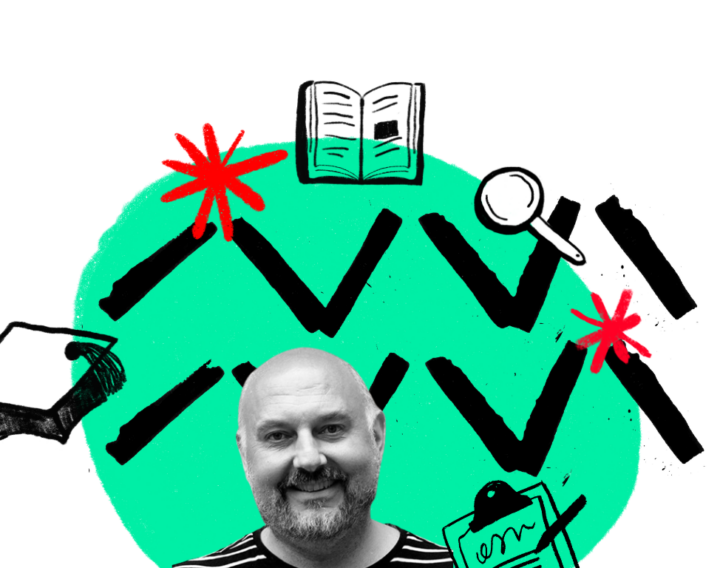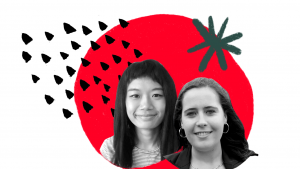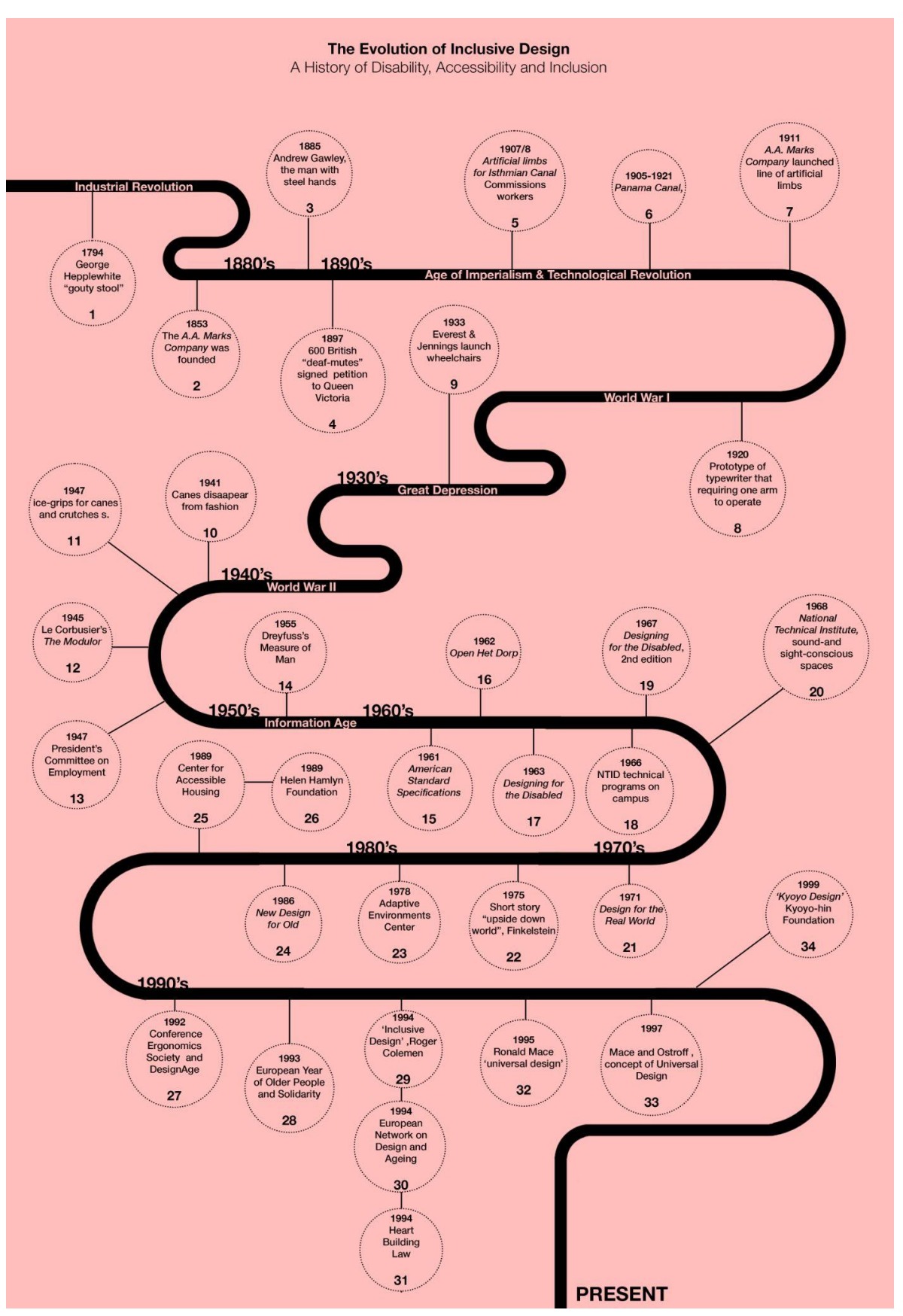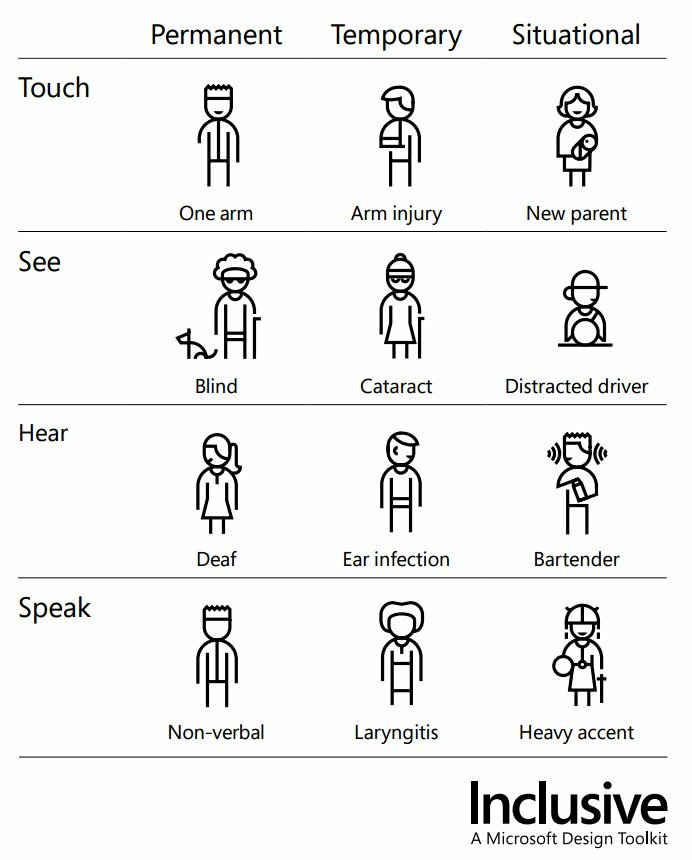
Inclusive Design: designing with everyone in mind
Snook Spotlight Series
Snook Spotlight Series

This article is part of the Snook spotlight series – where we bring you in-depth conversations with the best and brightest research and design thinkers.
In this edition, Kat Dixon interviews Becky Kuang and Natalia Riley, Service Designers at Snook about inclusive design.
Becky and Natalia explore what inclusive design is, how it’s different to user-centred design and why it can make such a difference to organisations who adopt its principles.
Becky moved into service design following a career in user experience; she now works with charities and governments to design better services. Natalia found service design following a brief career in communications; she’s helped a national museum, the NHS and charities provide better services. Kat is Third Sector Lead at Snook and has previously led diversity and inclusion projects.
This interview was conducted online, punctuated by an attention-seeking cat and with some munching on bagels. But we got there.
Kat: Welcome both! Becky and Natalia, you’ve done some fascinating work on inclusive design lately. Let’s dive right in. What exactly is inclusive design?
Natalia: It’s so nice to chat to you about this Kat! So, really simply:
“Inclusive Design is an approach to designing and delivering services that ensures everyone can access a service or product regardless of their background or life experience.”
That’s particularly key in public services because people often don’t have a choice in terms of what services they can access. There’s only one NHS for example; if you can’t access an oncology cancer service, that’s life and death.
There are also different ways of looking at inclusivity. Everyone has the potential to be excluded from services because we might have a situational, a temporary or a permanent change to our ability. But there are some people who are more likely to be excluded than others. And that’s because of systemic barriers like poverty, racism or digital exclusion.
Becky: I completely agree on the aspect of how you design inclusively, making sure that you don’t exclude people. And importantly, if you’re excluding people, be clear about it. You need to recognise that exclusion might happen during your design process, which is fine in some respects because recognition is more important than hiding it.
Another aspect is how you can deliver your project more inclusively. So that’s around how you can make sure that people have the ground to speak and they feel comfortable in that space to contribute.
Kat: Great, that’s a really helpful summary. How is inclusive design different from user-centred design (UCD)?
“In UCD traditionally, you think about looking at a user; you use them as a centre and then you design around them or with them. But then that really depends on who you define as your users.”
Becky: So when your designers or researchers have certain bias that they’re not aware of, that might lead to only involving a very specific group of people in your design process, and the use of your service might lead to certain exclusions.
Natalia: We’ve had a tradition of User Centred Design being about designing for people. Inclusive design promotes designing with people and looking at the biases that we’re bringing into the design process. It asks who are we including or excluding? It looks at the power differentials.
User Centred Design alone doesn’t produce an inclusive service, but User Centered Design with an inclusive lens does produce a more inclusive service.
Kat: Why does Inclusive Design matter? What about it feels important to you?
Becky: For me, inclusive design creates a sense of belonging. You really want people to feel that they belong to the service and the products you’re designing. And I think that’s really important. It’s not just people fitting in. It’s feeling that they belong to the service, that they think it’s for them.
“I think that’s a really fundamental human need that everyone wants to feel a sense of belonging.”
There’s a lot of services you will see that subtly imply that you don’t belong to this service. That makes you feel like you don’t belong to society, especially when the service is coming from government.
That can contribute to a lot of mental health challenges, because fundamentally those are government services telling you that you don’t belong.
Natalia: Inclusive Design is fundamentally about who can access the service, who can use it. And I think that’s particularly important in the public and third sector.
Not only is that choice in terms of whether you can get the care you need, for example in health, or if you are able to apply for a passport or not, but also if we’re creating a society where everyone has that chance to belong, they need to feel like they can participate in public life.
For charities, it’s a way of ensuring that they can actually do their job in terms of helping those who are most in need.
I think there’s a big place for inclusive design in the private sector too. The purple pound is the spending power of disabled households (a household with one or people who have a disability) which currently stands at £274 billion in the UK. That is a huge amount of money that thousands of companies are potentially missing out on by not making their services inclusive.
In terms of how we conceptualise disability in people’s contributions to society, it’s really important that we are, from the outset, designing for people to contribute and to use the services that are created for all of us.
“For me it’s massively about participation. If you think about it like a playground, this is about who are we letting join in in public life.”
Kat: That’s a really interesting translation. I think so much of this subject is about bringing inclusive design to life and explaining not only why it’s important for people’s individual experiences, but also wider participation in society.
Kat: I’d like to go back to like a bit more of an origin story. Is inclusive design a new idea? Where did it come from?
Natalia: Inclusive design is not a new thing. In the UK, the term ‘inclusive design’ was coined in 1994 by Roger Coleman. We’re looking at this through a Western lens here, but this has been growing since the industrial revolution.

Image Credit: Luka Kille-Speckter and Farnaz Nickpour from their research paper, ‘The evolution of inclusive design: A first timeline review of narratives and milestones of design for disability’.
Academics like Professor Hua Dong have suggested that inclusive design, like other parts of design, have moved through 4 high level stages since the 1990’s. We’ve gone from products to interfaces and interactions to experiences and services, and then systems. That’s very much like the evolution of design as a discipline itself.
Inclusive design has traditionally been framed within the lens of disability. Most recently on the social model of disability, which is about how the environment has been designed so that people can’t access it as opposed to disability being an issue with a particular person.
We’ve since developed our understanding to think about inclusive design in the context of ‘Design Justice.’ This came about around 2014- 2017 through the founding of the Design Justice Network and the work of designers like Ann Heylighen.
What we mean by design justice is how the designer, a medical professional, the person commissioning the design of a service etc generally has much more power than the person who has to use the service. This power difference impacts how we design. Design justice seeks to tip the scales of this power imbalance to make it more balanced so that people who are using the service are part of a co-productive process to design it.
Kat Holmes’s work for Microsoft was also a real turning point in terms of understanding changes in ability of all of us in terms of changes that are situational, temporary or permanent through the persona spectrum and how they affect our use of products and services.

Image credit: Kat Holmes and Microsoft. An illustration of the Microsoft Persona Spectrum.
“Inclusive design has started moving away from physical design. It started in the physical world and it’s in the last decade, we’ve started looking more at interface design.”
Becky: I feel that as we progress as a society, you start to see that it’s not just about disability, as important as that is, like Natalia mentioned. We’re seeing that the thinking around design justice starts expanding.
People from seldom heard communities or underrepresented communities start to bring in that their voice is not heard within the part of the design process and that’s really important.
There’s a lot of social research and community research that are doing that part already, and now inclusive design is bringing this way of working with communities into service design or interface product design.
Kat: That’s fascinating about how, because we’re moving into a digital space, we’re having to apply these principles in a new way.
You mentioned design justice and I’m always interested in how these different pieces of the jigsaw puzzle fit together and how these different terms interrelate. How does design justice as an idea fit alongside inclusive design?
Natalia: User centred design dictates that we need to speak with users, but we might not necessarily include the people who are going to be using a product at the extremes. And designers working on a product have their own biases.
“Design justice is about focusing on the voices of those who are directly impacted by the design process.”
It’s about empowering people who are from marginalised backgrounds be part of that process, to shift language and ways of working in a way that learns from and builds on the traditions of people who have previously been excluded.
Becky: Building on what Natalia said, by empowering the people who might be previously excluded, design justice shifts the mindset from experts coming into the community to design something for that community as experts to more of a facilitator.
Because the answer is within the community. I often feel like I’m not an expert of anything. What we know as designers is how to hold a space for the conversation to happen and facilitate the conversation for solutions to emerge.
Kat: How can organisations benefit from inclusive design? What does that mean in practice?
Becky: Inclusion has two lenses. One is practically doing it to make sure you don’t exclude people or you recognise exclusion happening. The second is the cultural side of how you create a sense of belonging within the organisation, which we haven’t touched on much.
“I believe inclusion has a huge benefit for organisations in terms of retention. You don’t really want to come to a company where you don’t feel you belong.”
For example, if you are neurodiverse, you might need different ways to participate in online meetings, which are more common now than before the pandemic. And when organisations deploy inclusive thinking on making meetings more inclusive, that has a huge benefit to a group of people who now feel like they’re part of the organisation. They no longer need to force themselves to fit into or participate in the way that they feel less comfortable.
From that aspect, inclusive thinking is very beneficial for organisations.
Natalia: Accessible services are mandated by law now, so all websites or digital services have to adhere to the Web Content Accessibility Guidelines which ensures that people with disabilities can access websites.
And if you make your service accessible from the outset, you won’t need to re-develop it to make it accessible in the future which can be very time consuming and therefore expensive.
In the long run, it’s the same with inclusion.
“If you design a service inclusively from the outset, it’s less likely that you’ll have to make quite costly changes or amendments or do any retrofitting afterwards. And retrofitting is very expensive.”
Secondly, organisations can benefit because inclusive design is really related to a concept called ‘psychological safety’, which is about the perception of people within an organisation in terms of being able to take risks and learn through failure and experiment.
Google did a lot of research on this in 2012. They found the most important factor that determined the effectiveness of their teams was psychological safety. So, we’ve seen that this element is really, really important for making the best services that we possibly can and the best for team dynamics.
“Lastly, it’s the notion that if we’re using inclusive design principles, we’re actually designing a much better product for everyone.”
For example, if we’re designing a digital interface on a phone, and we get the colour contrast right, it means that not only can someone who is partially sighted can see the product better, it means that when someone with 20:20 vision steps out of a coffee shop into bright sunlight, they can also see the app.
Kat: That’s a great example of how inclusive design can be better for everyone. What have you learned about inclusive design from Snook projects that surprised you?
Natalia: I was nervous about working on inclusive design without feeling like I was an expert. But actually, what really surprised me about projects that we run here at Snook is that we already run them inclusively. That’s something that we take for granted.
So, from the way that we communicate with clients in terms of asking about additional requirements to the way that we run internal kick-offs, our project processes are already inclusive, which I think is really encouraging. For example, before we start a project, we look at like what people’s preferences are, what they’re working hours might be, what they’re trying to work on, how they might want to receive feedback.
“The other thing that I learned is about the amount of fear that people have in talking about inclusive design or EDI.”
Our jobs as facilitators is to balance helping people who have those additional needs or who might come from a marginalised background, but also to try and create a sort of safe space or a Brave Space as we call it, where people aren’t afraid to ask questions and respectfully find out more about an impairment or a lived experience.
I’ve learned where I’ve perhaps skewed the balance between those two elements in the past. So that’s been really interesting, developing that skill.
Becky: I was also quite surprised about how much we’re doing inclusive design already. I feel like when you say to someone, you need to be inclusive, that’s such a big ladder for people to climb.
But the fact that you are doing it some way already, that can help clients to start climbing the ladder because the first step has already happened. Whether that’s how you organise your meeting invite, how you do your long e-mail, how you make sure that it’s readable. It’s not difficult to start small.
“It’s easy in inclusive design to think about getting to a perfect end state, but actually it’s a journey, which will never finish, and we’ll probably make mistakes along the way.”
Like Natalia mentioned, psychological safety becomes important when we see it as a journey.
For example, how we use language that is inclusive. We see all these different terms coming up because society progresses, and research enriches the conversation. It requires courage to say OK, what I knew before is actually wrong, how I refer to certain things are wrong and to have the courage to change your answer and make it better.
I feel the big surprise for me is that actually inclusive design is a journey that you step onto.
Kat: This has been fascinating. Thank you both so much.
For further insights and learning about Inclusive Design, watch Becky and Natalia’s session ‘How to start your Inclusive Design journey’ at Digital Leaders Week 2023 and sign up to our newsletter for more updates as we publish them.
If you’d like to talk to Snook about bringing inclusive design practices into your organisation, say hello at curious@wearesnook.com.